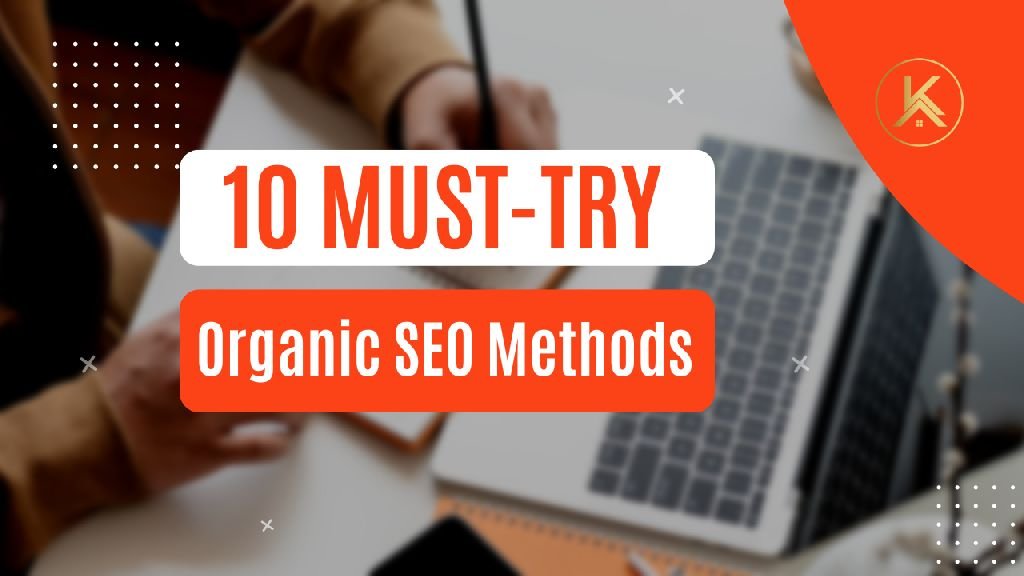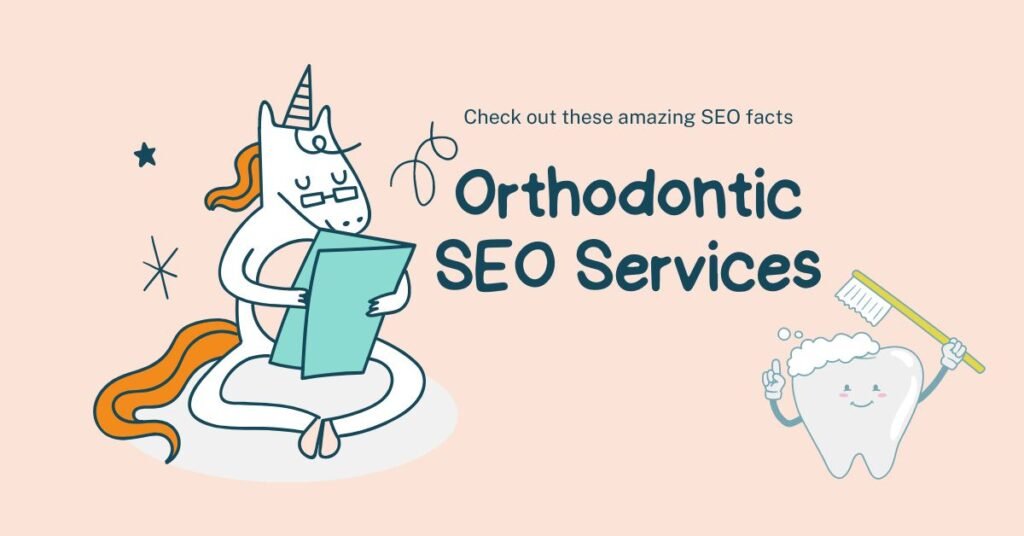Search Engine Optimization (SEO) has become an indispensable element of digital marketing, shaping how businesses connect with their audiences online. At its core, SEO involves optimizing a website to rank higher on search engine results pages (SERPs), thereby increasing organic traffic and visibility. However, the journey of SEO is as dynamic as the internet itself, constantly evolving to meet the ever-changing demands of users and search engine algorithms.

At Kito Agency, we pride ourselves on staying at the cutting edge of SEO advancements. By understanding the history and evolution of SEO, we are better equipped to anticipate future trends and deliver top-notch services to our clients. This article delves into the fascinating origins of SEO, tracing its development from the early days of the internet to the sophisticated strategies employed today. Join us as we explore how SEO started and how it has transformed the digital marketing landscape, ensuring businesses remain competitive in an increasingly digital world.
The Birth of SEO
The origins of SEO can be traced back to the early 1990s when the internet was still in its infancy. During this time, the first search engines began to emerge, aiming to help users find information in the vast and unstructured web. One of the earliest search engines was Archie, created in 1990, which allowed users to search for files stored on FTP sites. Following Archie, other search engines like Excite, Lycos, and Yahoo entered the scene, each bringing new methods for cataloging and retrieving information.

The landscape of SEO truly began to take shape with the launch of Google in 1998. Google’s innovative PageRank algorithm revolutionized how websites were indexed and ranked. Unlike earlier search engines that relied heavily on keyword matching, PageRank considered the number and quality of links pointing to a website, signaling a shift towards more sophisticated ranking methods. This development marked the beginning of a more structured approach to SEO, where the focus was on creating valuable content that attracted genuine links.
In these formative years, SEO was a relatively simple affair. Website owners quickly realized that by including specific keywords in their content and meta tags, they could improve their search engine rankings. This practice, known as keyword stuffing, became widespread. However, as search engines evolved, so did their algorithms, becoming more adept at identifying and penalizing manipulative tactics.
The birth of SEO set the stage for a continuously evolving field, driven by advancements in search engine technology and changing user behavior. As the internet grew, so did the competition for visibility, prompting businesses to adopt more sophisticated SEO strategies. The early days laid the foundation for what would become a critical component of digital marketing, guiding businesses on how to reach and engage their target audiences effectively.
Early SEO Practices
In the late 1990s and early 2000s, the field of SEO was marked by rudimentary techniques that capitalized on the relatively unsophisticated algorithms of early search engines. During this period, SEO practitioners focused heavily on manipulating keyword usage and optimizing meta tags to improve their rankings on search engine results pages (SERPs).
One of the most common practices was keyword stuffing. Website owners would cram as many relevant keywords as possible into their content, meta descriptions, and meta keywords tags. The goal was to signal to search engines that their pages were highly relevant to specific search queries. While this tactic often succeeded in improving rankings, it frequently led to poor user experiences, with content that was difficult to read and lacked genuine value.

Another prevalent strategy was the use of hidden text and links. By matching the color of the text to the background of a webpage, website owners could include additional keywords without affecting the visible content. Similarly, placing hidden links on a page could artificially boost the perceived importance of certain pages. These techniques aimed to deceive search engine crawlers, but they were eventually recognized and penalized as search engines became more sophisticated.
Link farms also emerged as a popular tactic during this era. These were networks of websites created specifically to generate inbound links, which were a key factor in early search engine algorithms like Google’s PageRank. By creating large volumes of low-quality links, SEO practitioners attempted to artificially inflate the authority and ranking of their target websites. However, this practice led to an abundance of spammy, irrelevant links, prompting search engines to refine their algorithms to better assess link quality.
Despite the manipulative nature of these early SEO practices, they highlighted the growing importance of search engine visibility and the lengths to which businesses were willing to go to achieve it. As search engines continued to evolve, they introduced algorithm updates designed to combat these tactics and prioritize high-quality, user-focused content. This shift marked the beginning of a more mature and ethical approach to SEO, setting the stage for the advanced strategies and best practices that dominate the field today.
The Rise of Algorithm Updates
As search engines evolved, it became clear that early SEO practices like keyword stuffing and link farming were undermining the quality of search results. In response, search engines began rolling out algorithm updates designed to improve user experience by prioritizing high-quality, relevant content. These updates marked a significant shift in the SEO landscape, making it more complex and challenging for businesses to achieve and maintain high rankings.
Google PageRank
The introduction of Google’s PageRank algorithm in 1998 was a game-changer. Unlike previous algorithms that focused primarily on keyword density, PageRank assessed the number and quality of links pointing to a page. This shift placed a greater emphasis on the importance of backlinks, encouraging the development of more authentic and valuable content that naturally attracted links.
Google Panda (2011)
In February 2011, Google launched the Panda update, which targeted low-quality content. This algorithm penalized websites with thin, duplicate, or low-value content, as well as those with high ad-to-content ratios. Panda forced website owners to prioritize creating comprehensive, original content that provided real value to users. This update significantly reduced the prevalence of content farms and sites that relied on keyword stuffing.
Google Penguin (2012)
Launched in April 2012, the Penguin update aimed to crack down on manipulative link-building practices. It targeted websites that engaged in black-hat SEO tactics such as link schemes, keyword stuffing, and cloaking. By penalizing sites with unnatural link profiles, Penguin emphasized the importance of earning high-quality, relevant backlinks through ethical practices.
Google Hummingbird (2013)
The Hummingbird update, introduced in August 2013, represented a major overhaul of Google’s search algorithm. It focused on understanding the intent behind search queries rather than just matching keywords. Hummingbird improved the ability to process complex, conversational queries, paving the way for more sophisticated search experiences. This update underscored the importance of semantic search and content that addressed users’ needs and questions.
Google RankBrain (2015)
RankBrain, launched in October 2015, is a machine-learning algorithm that helps Google interpret search queries and deliver more relevant results. By leveraging artificial intelligence, RankBrain can better understand the context and intent behind queries, even those it hasn’t encountered before. This development highlighted the growing importance of user experience and the need for content to be highly relevant and engaging.
Impact on SEO Practices

These algorithm updates collectively transformed the field of SEO. They shifted the focus from manipulative tactics to creating high-quality, user-centric content. SEO practitioners had to adapt by developing more sophisticated strategies that aligned with search engines’ goals of providing the best possible user experience.
At Kito Agency, we stay ahead of these changes by continually refining our strategies to meet the evolving demands of search engines. By understanding the impact of these algorithm updates, we help our clients navigate the complexities of SEO, ensuring their websites remain competitive in an ever-changing digital landscape.
The Role of Content in SEO
As search engines have evolved, the role of content in SEO has become increasingly central. Early SEO practices that focused on keyword stuffing and manipulative tactics gave way to a new paradigm where quality content reigns supreme. The shift towards content-driven SEO strategies has transformed how businesses approach digital marketing, emphasizing the creation of valuable, engaging, and relevant content.
Content is King
The phrase “content is king,” coined by Bill Gates in 1996, has never been more relevant. Search engines, particularly Google, prioritize content that provides genuine value to users. High-quality content helps answer users’ questions, solves their problems, and provides valuable insights. This focus aligns with the goals of search engines to deliver the best possible search experience.
Keyword Integration
While keyword stuffing is a thing of the past, keywords still play a crucial role in SEO. The difference now is in the approach. Modern SEO strategies involve integrating keywords naturally within the content. This includes using primary and secondary keywords in titles, headings, meta descriptions, and throughout the body text in a way that flows seamlessly and enhances readability. Keyword research remains essential, but the emphasis is on context and relevance rather than sheer volume.
Creating Value with Content
The rise of content marketing has placed a spotlight on creating value. This means producing content that is informative, educational, and engaging. Blog posts, articles, infographics, videos, and other forms of content should address the needs and interests of the target audience. By providing high-quality content, businesses can establish themselves as authorities in their respective fields, earning the trust and loyalty of their audience.
User Experience and Engagement
Content is a significant driver of user experience. Engaging, well-structured content keeps users on the site longer, reduces bounce rates, and encourages interaction. This user engagement signals to search engines that the content is valuable, which can positively impact rankings. Elements such as readability, multimedia integration, and mobile-friendliness contribute to a positive user experience.
The Role of Originality and Freshness
Search engines favor fresh, original content. Regularly updating a website with new content signals to search engines that the site is active and relevant. Original content, free from duplication, helps avoid penalties and ensures that the site stands out from the competition. Additionally, evergreen content—content that remains relevant over time—can continually attract traffic and backlinks, providing long-term SEO benefits.
Content Formats and Diversity
Diversifying content formats is another critical aspect of modern SEO. Written content, such as blog posts and articles, is essential, but incorporating other formats like videos, podcasts, and infographics can enhance user engagement and reach a broader audience. Different content formats cater to different user preferences and can be particularly effective in capturing attention and driving traffic.
Mobile and Local SEO
The rise of mobile internet usage and the growing importance of local search have significantly impacted SEO practices. As more users access the internet from their mobile devices and search for local businesses and services, optimizing for mobile and local SEO has become essential for businesses looking to stay competitive.
The Rise of Mobile SEO

With the proliferation of smartphones and tablets, mobile internet usage has skyrocketed. This shift prompted search engines, particularly Google, to prioritize mobile-friendly websites in their ranking algorithms. In 2015, Google introduced the Mobile-Friendly Update, also known as “Mobilegeddon,” which penalized websites that were not optimized for mobile devices. This update underscored the importance of having a responsive design that provides a seamless user experience across all devices.
Key aspects of mobile SEO include:
- Responsive Design: Ensuring that websites adapt to different screen sizes and orientations.
- Page Speed: Optimizing page load times, as mobile users expect fast, efficient browsing experiences.
- Mobile Usability: Ensuring that buttons, links, and navigation are easy to use on smaller screens.
- AMP (Accelerated Mobile Pages): Implementing AMP to create lightweight, fast-loading pages for mobile users.
The Importance of Local SEO
Local SEO focuses on optimizing a business’s online presence to attract more customers from relevant local searches. This is particularly important for brick-and-mortar businesses and service providers targeting customers in specific geographic areas. With the increasing use of mobile devices, local searches have become more prevalent, often including phrases like “near me” or specific location names.
Key components of local SEO include:
- Google My Business (GMB): Creating and optimizing a GMB profile to ensure accurate and up-to-date information about the business, such as address, phone number, hours of operation, and customer reviews.
- NAP Consistency: Ensuring that the business’s Name, Address, and Phone number (NAP) are consistent across all online directories and platforms.
- Local Citations: Building citations in local directories, review sites, and industry-specific platforms to improve local search visibility.
- Localized Content: Creating content that is relevant to the local audience, including blog posts, landing pages, and social media updates that highlight local events, news, and community involvement.
- Customer Reviews: Encouraging satisfied customers to leave positive reviews on GMB and other review platforms, as reviews are a significant factor in local search rankings.
Mobile and Local SEO Synergy
The intersection of mobile and local SEO is where businesses can see significant benefits. Many local searches are conducted on mobile devices by users seeking immediate information about nearby businesses. By optimizing for both mobile and local SEO, businesses can capture this high-intent traffic and convert it into customers.
For example, a user searching for “best coffee shop near me” on their smartphone is likely looking for immediate results. A mobile-optimized website with a strong local SEO presence, including a well-optimized GMB profile, positive reviews, and up-to-date contact information, can effectively attract and convert this user.
The Modern Era of SEO
The modern era of SEO is characterized by advanced strategies that go beyond traditional keyword optimization and link building. Today’s SEO practices focus on enhancing user experience, leveraging artificial intelligence, and adapting to evolving search engine algorithms. This holistic approach ensures that websites not only rank well but also provide meaningful value to users.
User Experience (UX)
User experience has become a central focus of modern SEO. Search engines prioritize websites that offer seamless, intuitive, and engaging experiences. Key aspects of UX that impact SEO include:

- Page Speed: Fast-loading pages are crucial for retaining visitors and reducing bounce rates. Tools like Google PageSpeed Insights can help identify and address speed issues.
- Mobile-Friendliness: With the majority of searches now conducted on mobile devices, having a responsive design is essential. Mobile-friendly websites are favored in search rankings.
- Navigation: Clear, intuitive navigation helps users find information quickly and easily, improving their overall experience and encouraging longer site visits.
- Content Readability: Content should be well-structured, easy to read, and free from jargon. Proper use of headings, bullet points, and white space enhances readability.
Artificial Intelligence and Machine Learning
Artificial intelligence (AI) and machine learning have significantly impacted how search engines understand and rank content. Google’s RankBrain, an AI-based algorithm, processes search queries and delivers more relevant results by understanding the context and intent behind searches. This development emphasizes the need for content that answers users’ questions comprehensively and accurately.
Voice Search Optimization
With the rise of voice-activated devices like smart speakers and virtual assistants, optimizing for voice search has become increasingly important. Voice search queries are often more conversational and longer than text searches. To optimize for voice search, consider:
- Natural Language: Use natural, conversational language in content to match the phrasing of voice search queries.
- Featured Snippets: Aim to provide concise, informative answers that could be featured in Google’s snippets, as these are often used in voice search responses.
- Local SEO: Many voice searches are local in nature, so ensuring strong local SEO practices can help capture this traffic.
E-A-T (Expertise, Authoritativeness, Trustworthiness)
Google’s Quality Rater Guidelines emphasize the importance of E-A-T for high-ranking content. Demonstrating expertise, authoritativeness, and trustworthiness involves:
- Expert Authors: Using content created or reviewed by experts in the field.
- Author Bios: Including detailed author bios that highlight credentials and experience.
- Citations and References: Linking to credible sources to support claims and enhance content reliability.
Content Depth and Relevance
Search engines favor in-depth, relevant content that thoroughly addresses user queries. This includes:
- Comprehensive Guides: Creating detailed, long-form content that covers topics extensively.
- User Intent: Understanding and addressing different types of user intent (informational, navigational, transactional) in content.
- Content Updates: Regularly updating content to ensure it remains current and relevant.
Technical SEO
Technical SEO continues to be a critical aspect of modern SEO practices. It involves optimizing the backend structure of a website to improve its visibility and functionality. Key elements include:
- Site Architecture: Ensuring a logical and organized site structure that search engines can easily crawl.
- XML Sitemaps: Creating and submitting XML sitemaps to help search engines index all pages.
- HTTPS: Securing the website with HTTPS to protect user data and improve rankings.
- Schema Markup: Using schema markup to provide search engines with additional context about the content, improving the chances of appearing in rich snippets.
Future of SEO
The future of SEO promises to be even more dynamic and sophisticated, driven by technological advancements and changing user behaviors. As we look ahead, several key trends and innovations are expected to shape the SEO landscape, influencing how businesses optimize their online presence to remain competitive.
Artificial Intelligence and Machine Learning
AI and machine learning will continue to play a significant role in the future of SEO. Search engines will become better at understanding user intent and delivering highly personalized search results. Future SEO strategies will need to account for:
- AI-Driven Content Creation: AI tools will assist in creating content that is optimized for search engines and user intent, ensuring higher relevance and engagement.
- Advanced User Behavior Analysis: Machine learning algorithms will analyze user behavior more precisely, allowing for more effective optimization of content and user experience.
Voice Search and Natural Language Processing
As voice search becomes increasingly prevalent, optimizing for natural language queries will be crucial. Future SEO strategies should focus on:

- Conversational Keywords: Incorporating more natural, conversational keywords and phrases into content to match voice search queries.
- Featured Snippets and Answer Boxes: Structuring content to appear in featured snippets and answer boxes, as these are often used for voice search responses.
- Voice Search Analytics: Utilizing analytics to understand and optimize for the specific queries and behaviors associated with voice search.
Mobile-First and User-Centric Approaches
The mobile-first approach will continue to dominate as mobile internet usage grows. Key considerations for the future include:
- Progressive Web Apps (PWAs): Developing PWAs that offer fast, reliable, and engaging mobile experiences.
- User-Centric Design: Prioritizing user experience in all aspects of web design and content creation to meet the expectations of mobile users.
Visual and Video Search
The rise of visual and video search engines like Google Lens and YouTube will influence SEO strategies. Future trends include:
- Image and Video Optimization: Ensuring images and videos are optimized with relevant metadata, descriptions, and tags to improve visibility in visual search results.
- Visual Content Creation: Investing in high-quality visual content, such as infographics, images, and videos, to engage users and enhance search performance.
Personalization and Contextual Search
Search engines are moving towards providing highly personalized and contextual search results. Future SEO practices will need to focus on:
- User Data Utilization: Leveraging user data to create personalized content and experiences that meet individual user needs and preferences.
- Contextual Relevance: Understanding the context of user queries and providing content that is contextually relevant and timely.
Blockchain and SEO
Blockchain technology could have a significant impact on SEO, particularly in terms of transparency and trust. Potential applications include:
- Decentralized Search Engines: The development of decentralized search engines that offer more privacy and security for users.
- Verified Data and Authenticity: Using blockchain to verify the authenticity of content and backlinks, reducing the prevalence of spam and manipulative SEO tactics.
Conclusion
The journey of SEO from its inception to the present day has been marked by significant transformations driven by technological advancements, evolving search engine algorithms, and changing user behaviors. From the rudimentary techniques of the early days to the sophisticated strategies of today, SEO has continuously adapted to meet the demands of both search engines and users.
At Kito Agency, we pride ourselves on our ability to navigate the complexities of SEO and deliver cutting-edge solutions for our clients. By staying at the forefront of industry developments and continuously refining our strategies, we ensure that our clients’ websites are optimized for success in today’s dynamic digital landscape and prepared for the future.
As we move forward, the principles of providing value, enhancing user experience, and leveraging advanced technologies will remain central to effective SEO practices. By embracing these principles and staying agile in the face of change, businesses can achieve sustained visibility and growth in an increasingly competitive online environment. At Kito Agency, we are dedicated to helping our clients thrive in this ever-evolving landscape, ensuring their SEO strategies are not only current but also future-proof.



Pingback: Mastering Success: Unleashing the Power of Smart SEO Strategies
Great post, I think blog owners should acquire a lot from this web blog its very user genial.